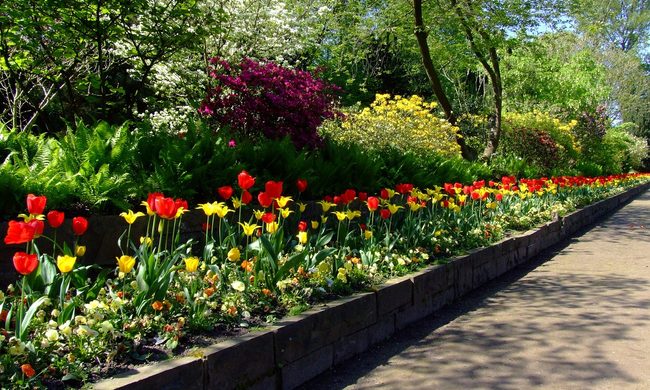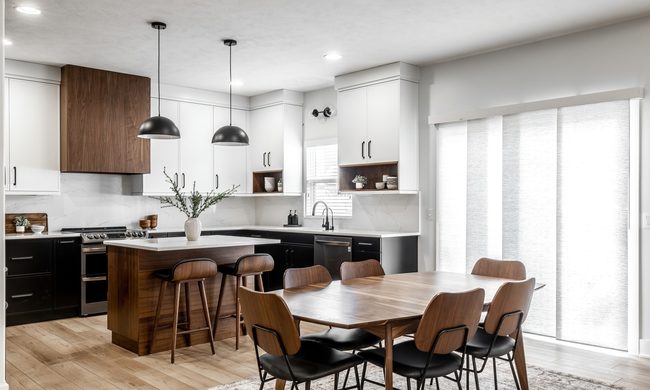While rustic and industrial decor share many similarities, their differences can make it challenging to create a cohesive look with both styles. Without proper planning, a design can lean too heavily on either style or come out looking brash, dark, and overwhelming. To help you find balance in rustic industrial interior design, we’ve gathered a few tips that will help you highlight the best of both styles.
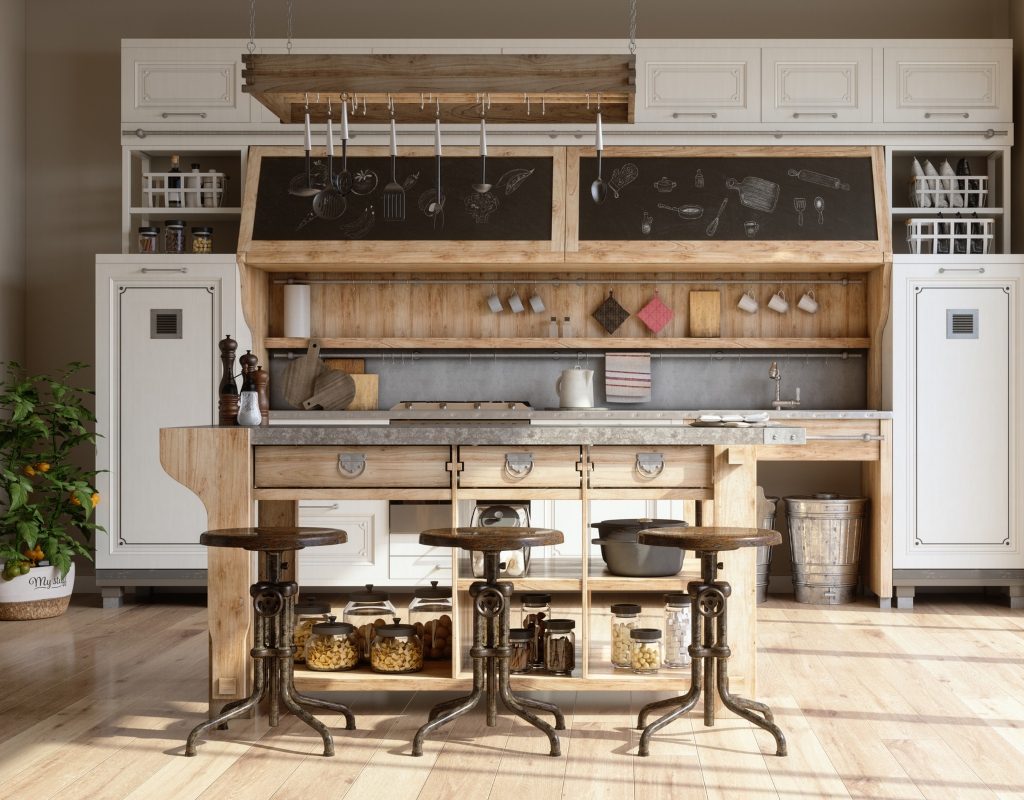
Add warmth to your industrial design
If you have an existing industrial design scheme, adding a bit of warmth to the space can give it a rustic touch. Industrial designs are notable for their metal fixtures, concrete floors, and exposed elements, all of which can make a design feel cold or stark. Adding warmth through rustic design can help you invite a comfy, cozy feeling. Try incorporating a warm-toned rug with a concrete floor to soften the space. Alternatively, you can use leather furniture, wood tones, and neutral-colored blankets to enhance the comfortability of the room.
If your design is already rustic and you want to incorporate more industrial elements, do the opposite of what we mentioned above and try cooling down the space. Use decorative pipes, stoneware, and grey hues to tone down the warmth of the space.
Blend wood and metal textures
An easy way to take advantage of both styles is to blend their main textures together. Rustic design is well known for its raw wood aesthetic, while industrial decor is best known for its metal piping. Use a raw wood coffee table with metal legs or metallic accents to create a cohesive look. Or blend those two styles by using a wood coffee table with metal decor or a metal coffee table with wooden decor.
Another way to blend these two elements is with bookshelves and open shelving. Wooden shelves on metal pipe brackets can be the perfect way to pull off rustic industrial decor.
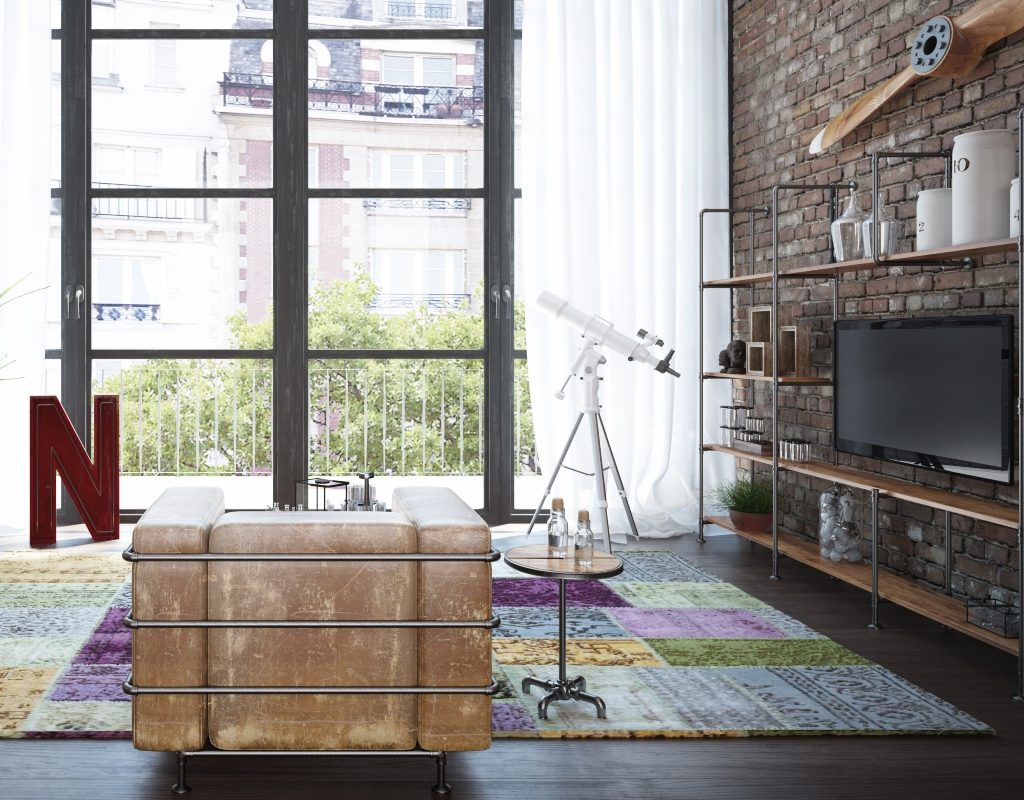
Try a subtle brick and stone aesthetic
Both rustic and industrial styles utilize some form of exposed rock-like material. In industrial styles, it’s common to see brick accent walls, kitchen islands, and other decorative elements alongside concrete or metal materials. Similarly, rustic design uses stonework alongside logs and raw wood to create a more natural aesthetic. We recommend using stone and brick within your design to help create a subtle blend of the two design styles.
Faux brick or stone wallpaper can be an excellent choice for homes without this authentic architectural detail or for spaces that struggle with high humidity. The natural appeal can still be utilized and fit seamlessly with existing rustic or industrial decor. Try creating a stone or brick accent wall for a creative touch to your space.
Use industrial-style pieces for utility
If you’re struggling to create a blend of these two styles, try taking a new perspective on how these styles should function in your home. A simple example would be to use industrial aesthetics for utility and rustic decor for comfort.
Use industrial style for curtain rods, shelving, and lighting. These utilitarian areas of the home allow the industrial style to shine. Focus on metal fixtures and hardware that feel modern and help highlight the factory-like aesthetic of the room. Additionally, exposed piping, kitchen appliances, chairs, and organizers can express the industrial aesthetic in your space. Try to incorporate those elements into your design, and highlight these exposed pieces when curating a blend between the two styles.
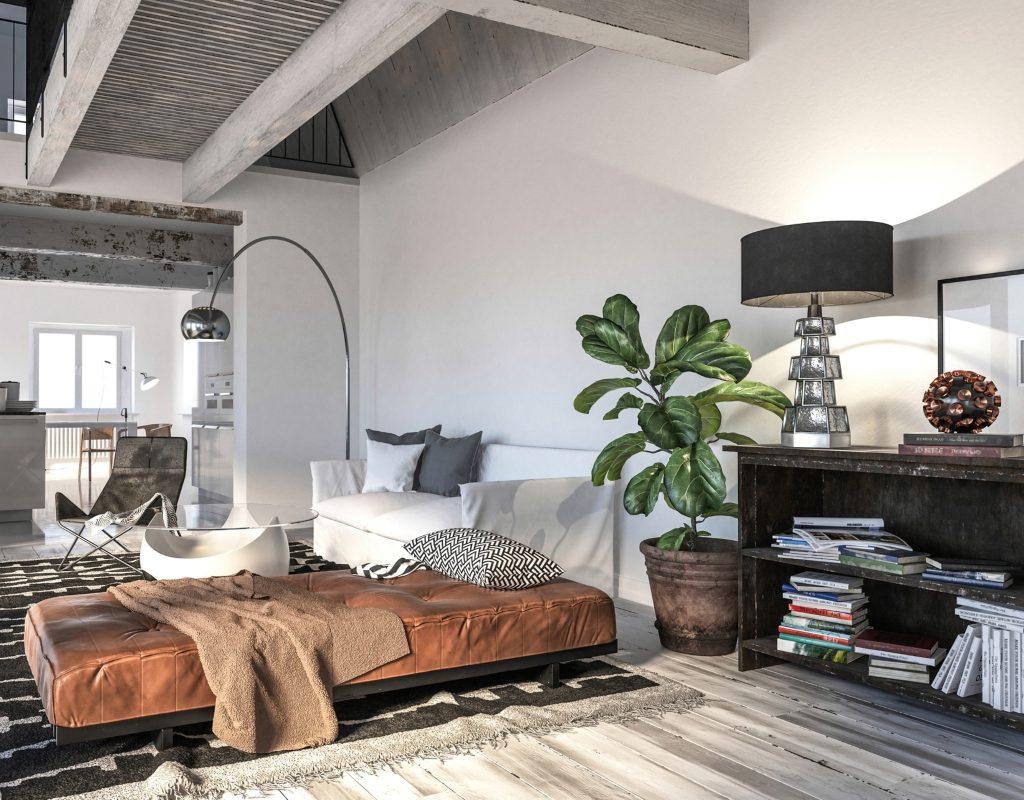
Add antique pieces for a more rustic look
To achieve a rustic look in your design, opt for antique pieces that can add a bit of character to your space. Antique signs, decor pieces, picture frames, bowls, and trinkets can be the perfect addition to adorn your shelves or tables with a rustic touch. Additionally, purchasing vintage-inspired rugs or blankets can help add a bit of coziness and softness to a cold industrial space. The trick is to use your rustic decor to accentuate the industrial elements while also adding more warmth and character to your design.
Blending rustic and industrial styles to create one cohesive look is about finding a balance between man-made and natural pieces. Try to blend both warm and cold colors together, and focus on using texture and pattern to your advantage. With a bit of forethought, you can create the perfect cozy and rugged atmosphere that suits your personal style.


